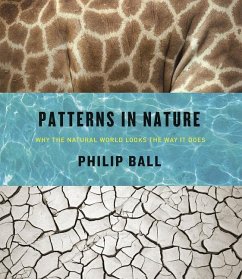While the natural world is often described as organic, it is in fact structured to the very molecule, replete with patterned order that can be decoded with basic mathematical algorithms and principles. In a nautilus shell one can see logarithmic spirals, and the Golden Ratio can be seen in the seed head of the sunflower plant. These patterns and shapes have inspired artists, writers, designers, and musicians for thousands of years. "Patterns in Nature: Why the Natural World Looks the Way It Does" illuminates the amazing diversity of pattern in the natural world and takes readers on a visual tour of some of the world s most incredible natural wonders. Featuring awe-inspiring galleries of nature s most ingenious designs, "Patterns in Nature" is a synergy of art and science that will fascinate artists, nature lovers, and mathematicians alike."







